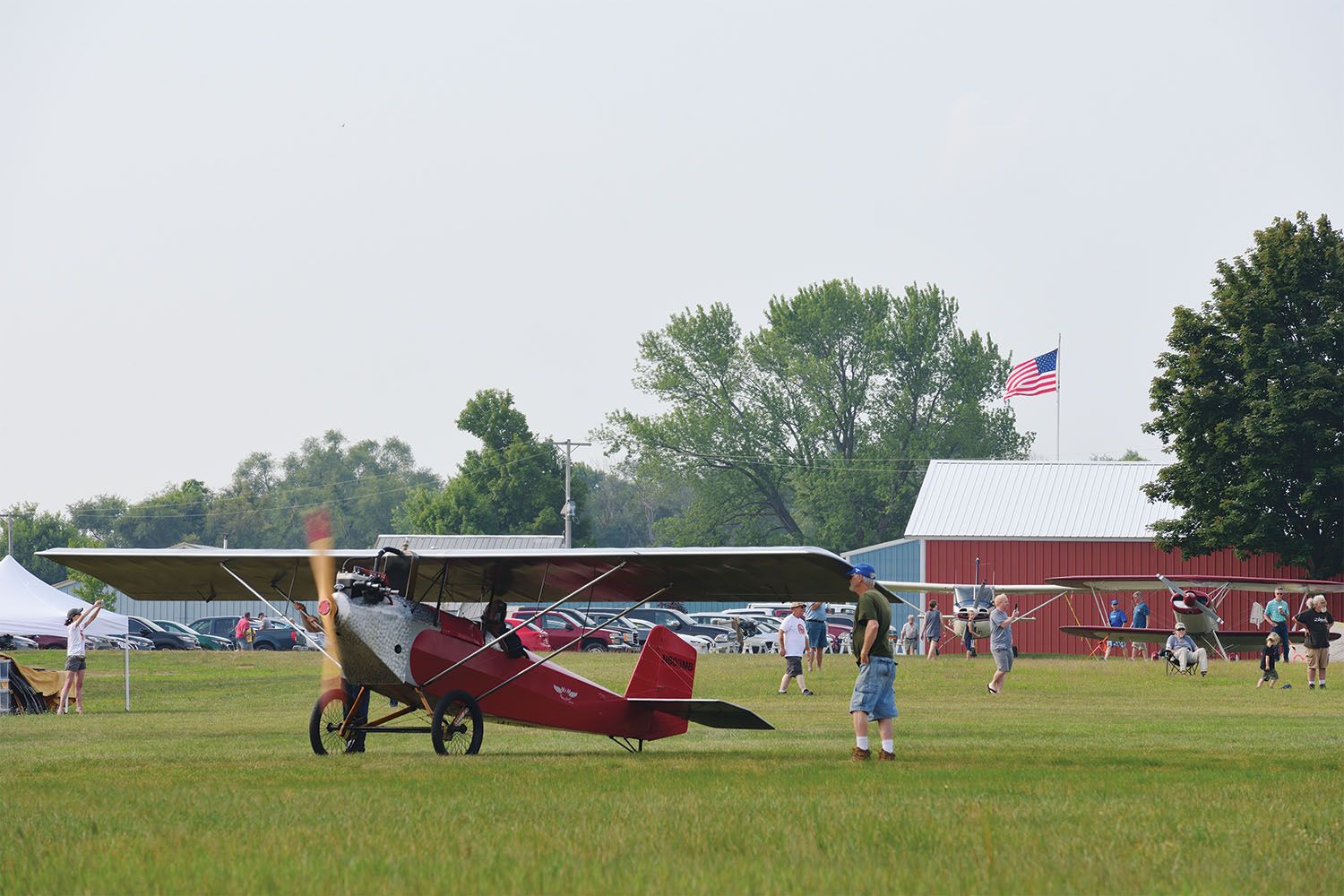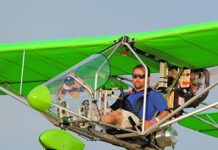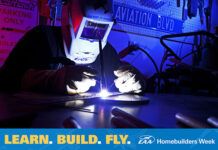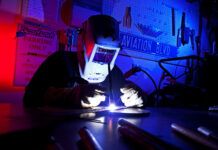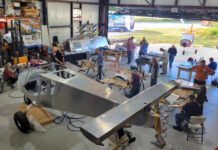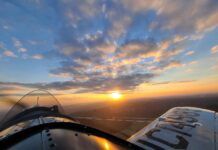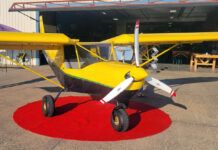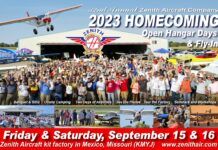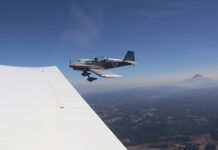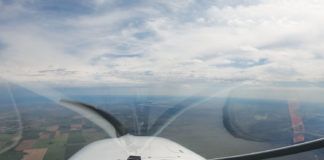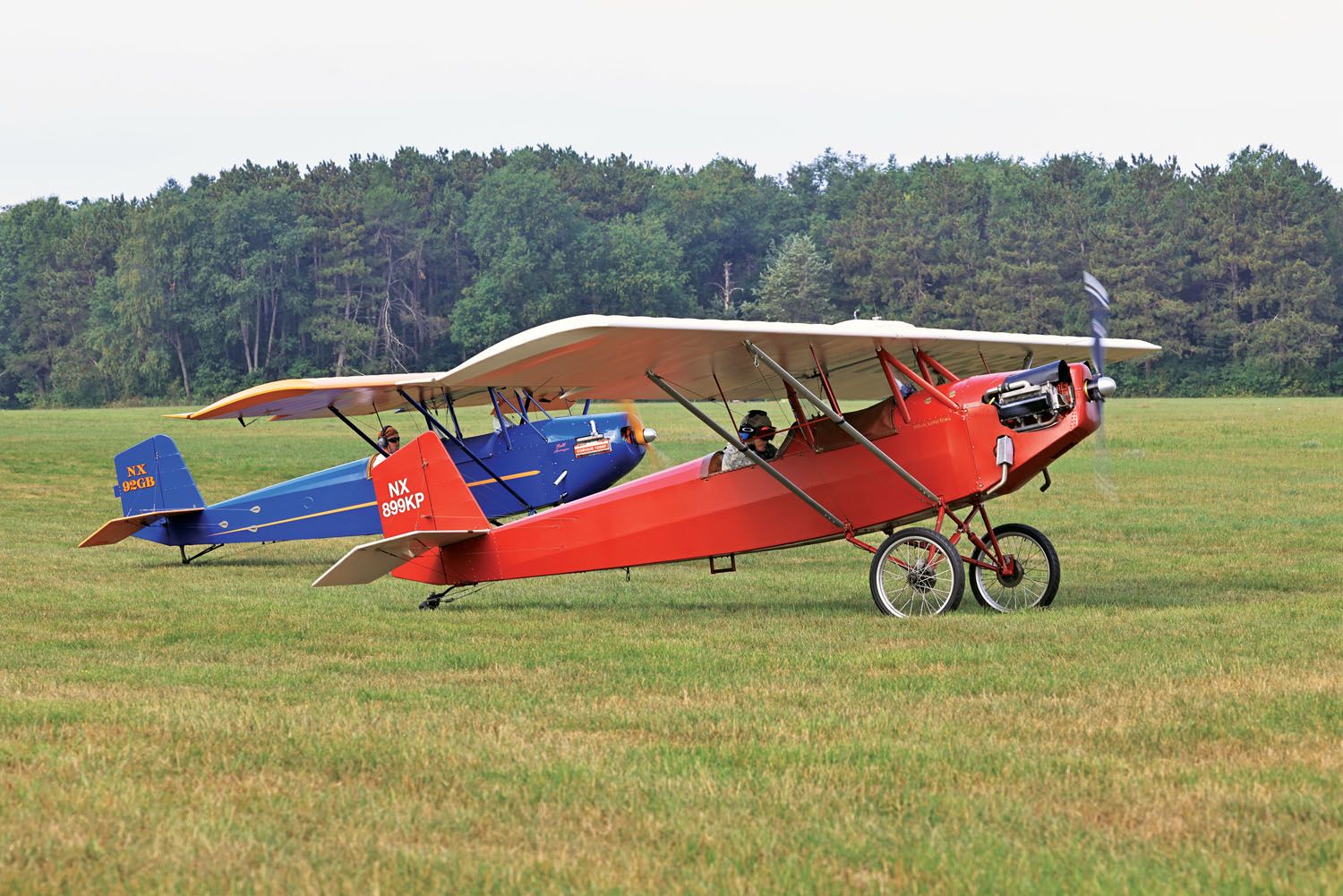
Every year since 1976, on the weekend before AirVenture, aficionados of the venerable Pietenpol Air Camper gather at a magical little airport in the small town of Brodhead, Wisconsin, for the annual Pietenpol Reunion. Brodhead Airport, located about 100 miles south of Oshkosh, is an absolute treasure and home to EAA Chapter 431, not to mention the Brodhead Pietenpol Association. It has three perfectly maintained grass runways and is home to many exceptional antique and homebuilt aircraft. It also houses the newly expanded Kelch Aviation Museum, a must-see attraction for anyone visiting the area. The Pietenpol Reunion draws a large crowd every year, including fans of the design and others who take advantage of the beautiful airport en route to AirVenture Oshkosh.
For people who aren’t familiar with the Pietenpol Air Camper, it’s the creation of Bernard Pietenpol, a self-taught aircraft builder who designed and built the open-cockpit, tandem two-seat, parasol-wing craft. The wingspan is 29 feet and, as it was originally designed, it had a length of 17 feet 8 inches. The empty weight is around 600 pounds with a gross weight of 995 pounds, giving it a useful load of 395 pounds. The wing area is 135 square feet, which calculates out to a wing loading of around 7 pounds per square foot. Cruise speeds range between 60 and 80 mph with a stall speed around 35 mph.

The first prototype was built in Bernard’s workshop in Cherry Grove, Minnesota, and flew in 1929. With a wood-and-fabric structure, it was a major milestone in the evolution of homebuilt aircraft. It was designed to be straightforward to build and fly, but most importantly, it could be constructed with materials readily available to ordinary people. Anyone who wanted to could find the necessary tools, equipment and parts at local hardware stores or lumberyards at a reasonable price.
The original model was powered by a four-cylinder water-cooled Ace engine, which was followed by the Model A Ford engine that became the standard for early Air Campers. As an amusing side note, there weren’t spare engines available when the Ford Model A was introduced, so Bernard bought parts from a local Ford dealer and built up the engines himself.
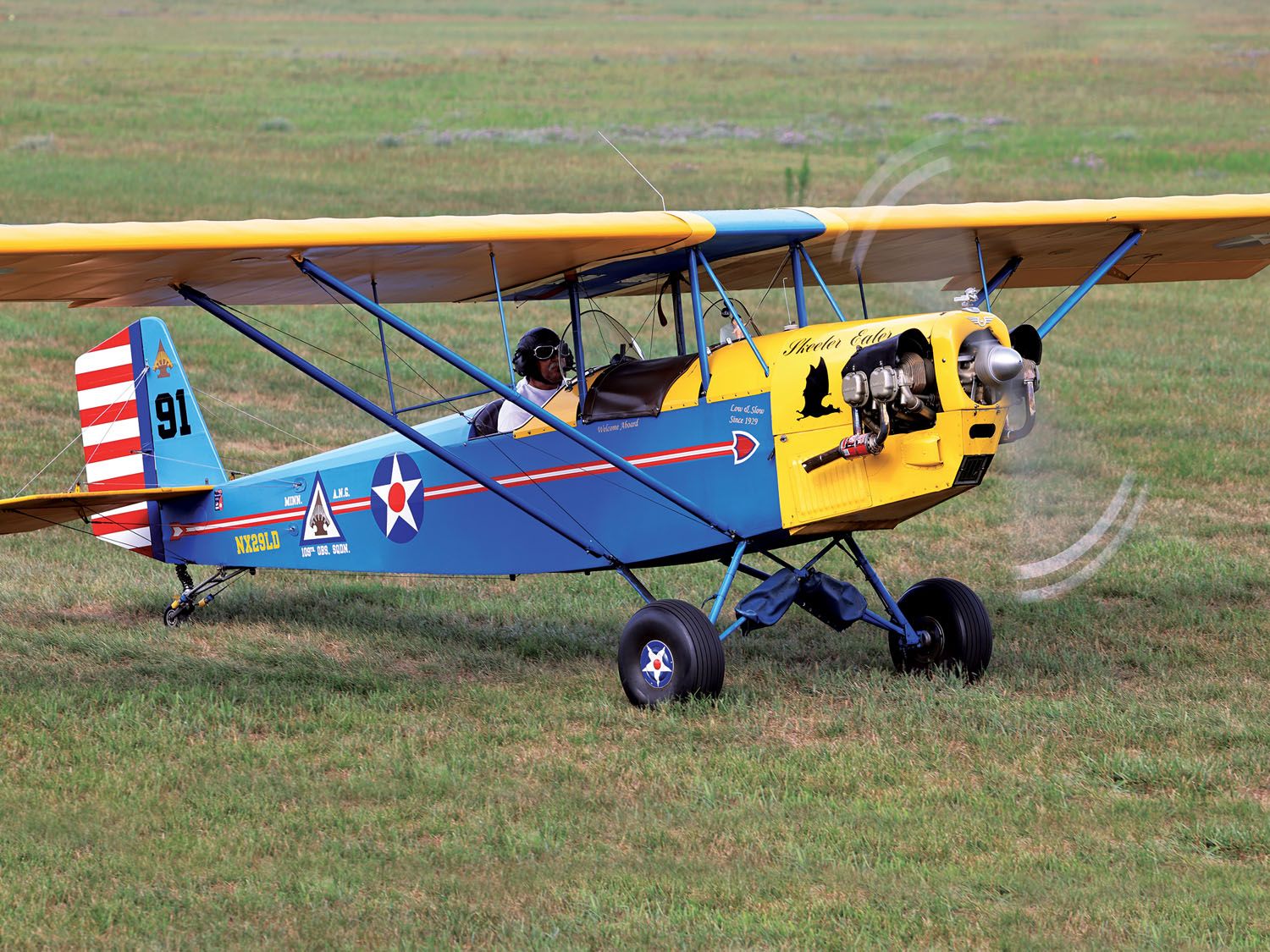
Soon after the Air Camper took flight, Modern Mechanics and Inventions magazine published an editorial downplaying the idea of automotive engines being used to power aircraft. Bernard Pietenpol wrote back explaining that he had done just that. At their invitation, he and a fellow pilot flew two Air Campers from Cherry Grove to Minneapolis as a demonstration. The next issue featured his airplane prominently. Plans were made available in a four-part series in the Flying and Glider Manual of 1932–33, providing a large jump start to the homebuilt aircraft movement.
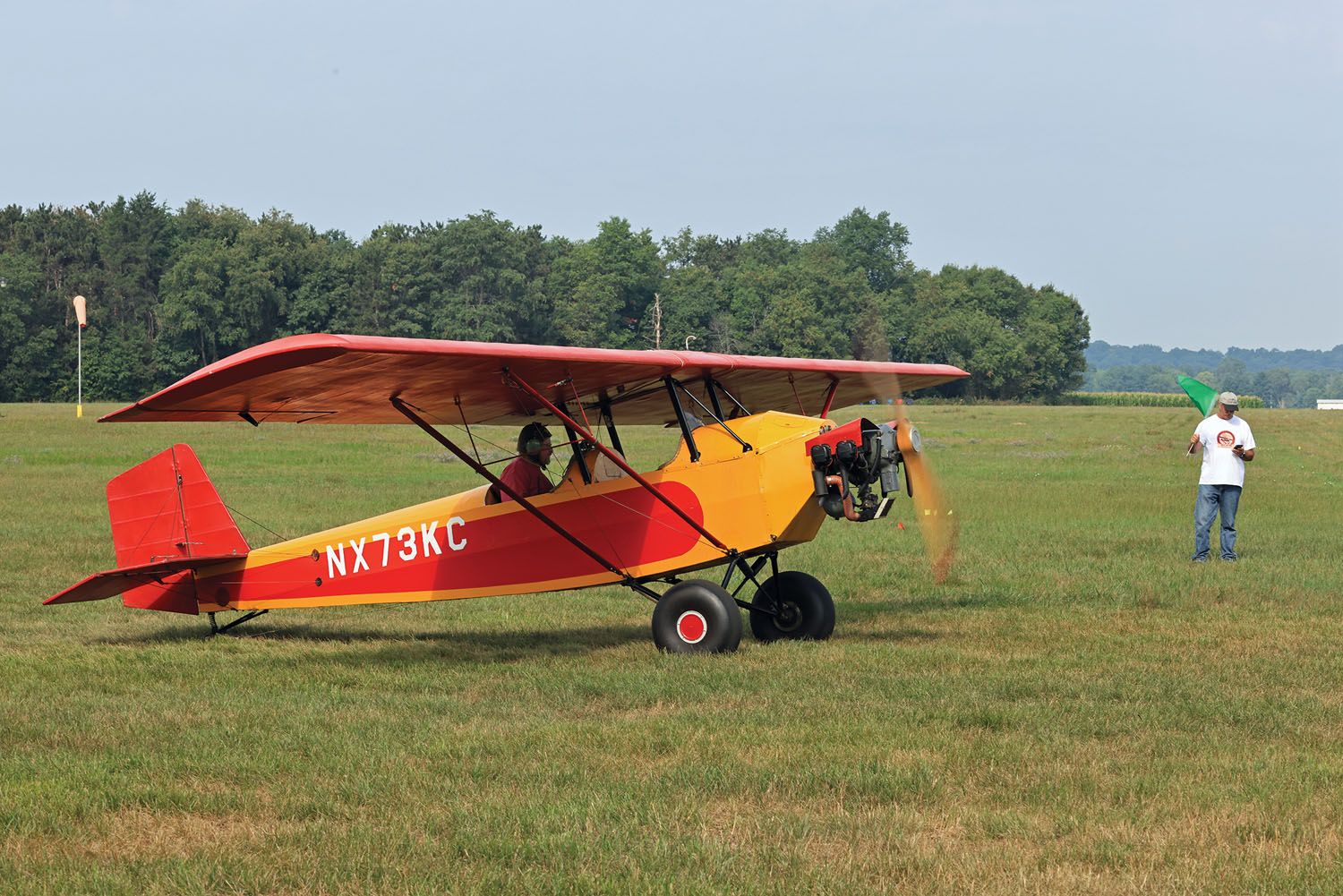
Kenny Crider’s Piet taxies forward.
More Power, Bernie!
In the 1960s, Bernard began experimenting with the Chevrolet Corvair engine. This provided more horsepower, was lighter weight (being air-cooled) and ran smoother with its six cylinders. For those who preferred an aviation-specific engine, the Continental A-65, C-85, C-90 and even the O-200 have been adapted. At least 30 different engine choices have powered Piets throughout the design’s lifespan, including several radials.
Over time, as people have gotten bigger, there have been variations to the airframe, including lengthening the structure and replacing the wood fuselage with steel tubing. The state-of-the-art 1920s aircraft’s lack of brakes and wooden tail skid were replaced with tailwheels and better stopping mechanisms, shoulder harnesses and other updates as well. To complicate matters, there are several similar aircraft, such as the Grega GN-1, based upon the Pietenpol design but using Piper Cub wings. All of this begs the questions: What is an original Pietenpol, and what engine/prop/airframe is better?
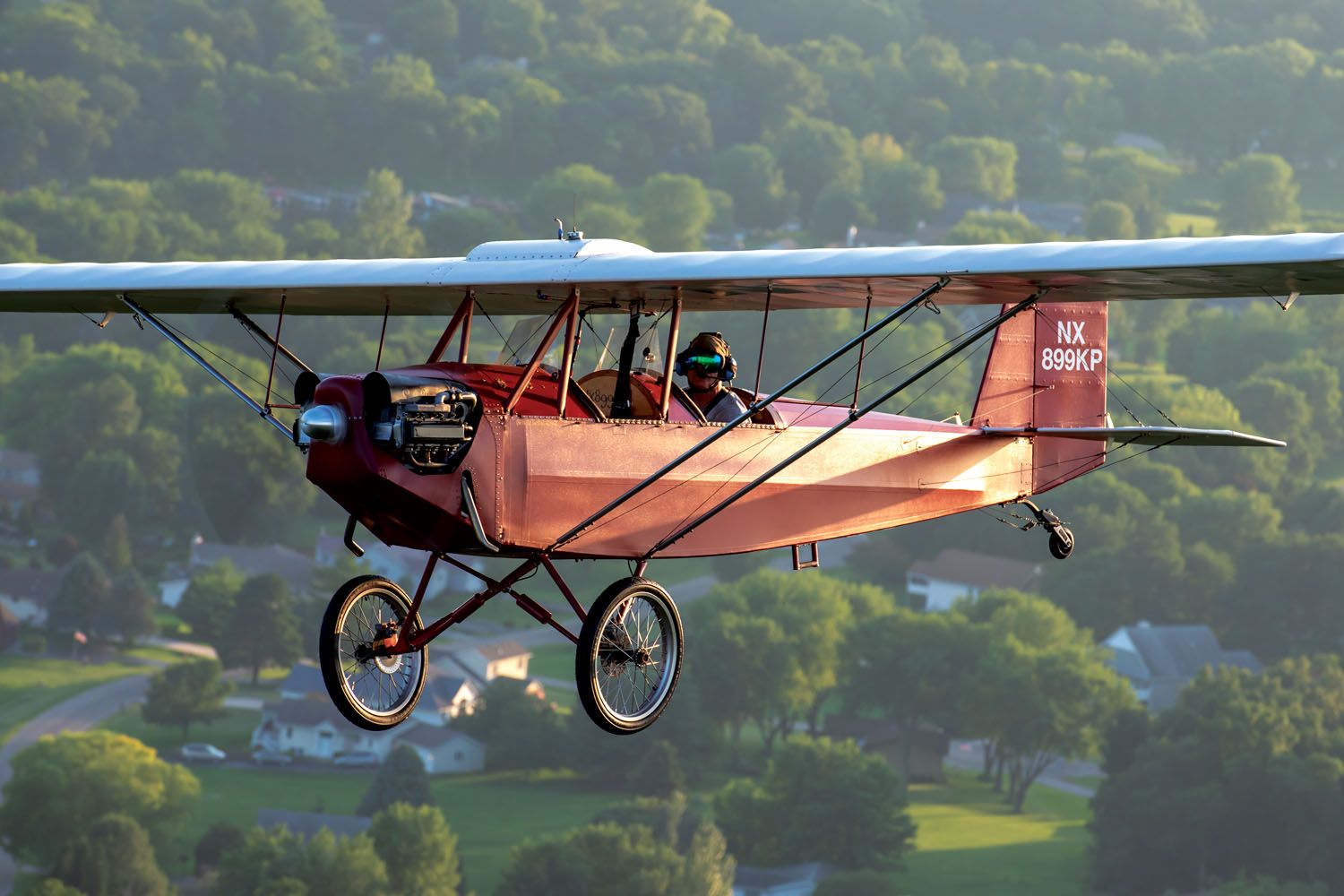
Lotta Rosie, rounding the course.
Well, there are a lot of variations. Over the years many folks have developed their own opinions as they compare the various construction techniques and modifications. Those debates and observations have dominated many evenings of discussion around the Brodhead campfires. So how can one decide whether or not an alteration of the original plans or engine choice is a good idea? If only there was some way to compare different variables to get head-to-head data of various engine combinations in flight. Hmm, you see where this is going, don’t you?
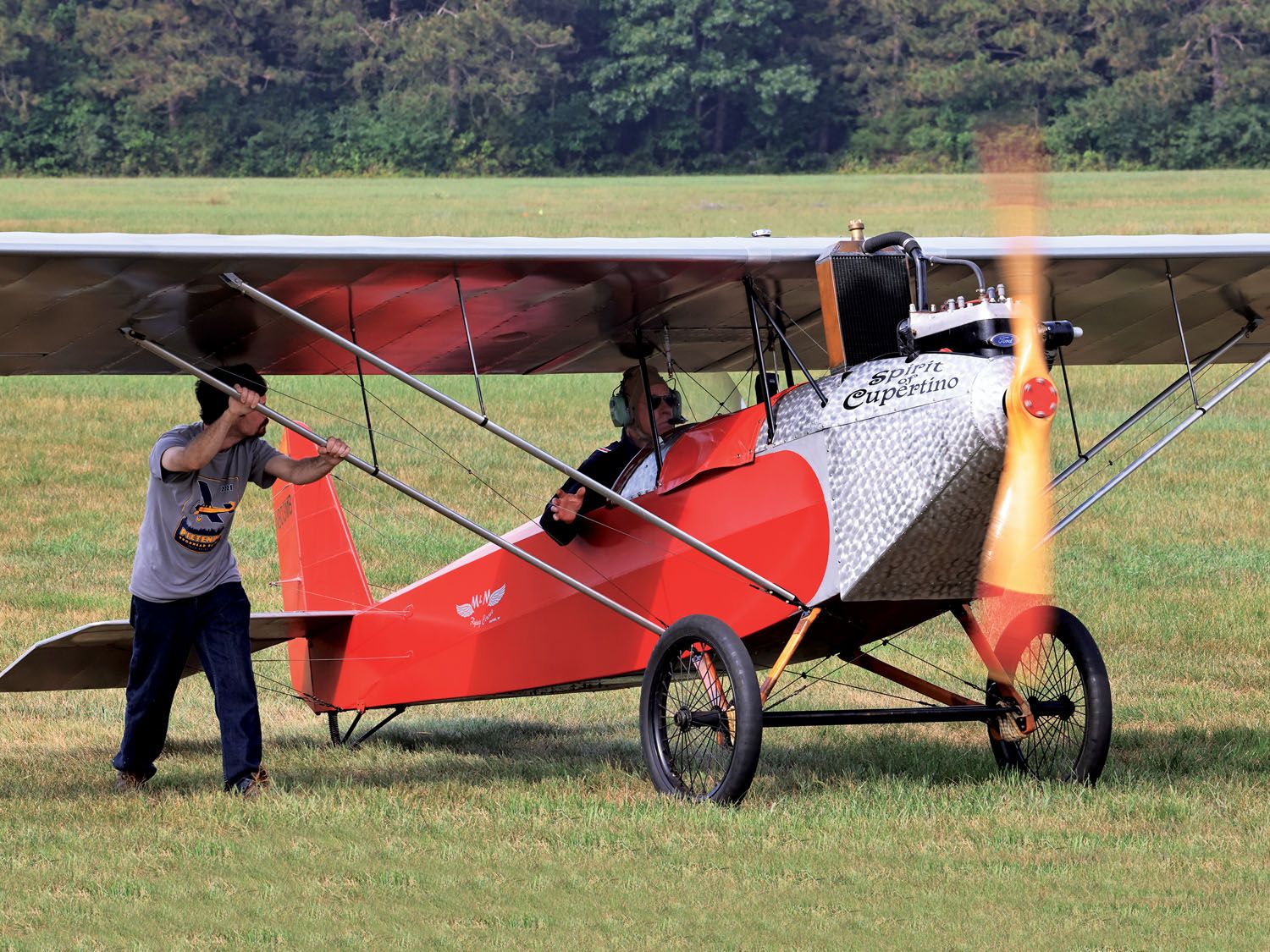
John Linke has a wing walker keep him in line.
A Race for Piets?
Married couple Kevin Purtee and Shelley Tumino are ardent serial builders and flyers of Pietenpols. They have made the ambitious trip from Texas to Brodhead with their Pietenpol on six occasions and have attended the event several other times without an aircraft. That takes some serious dedication as it can take four or five days each way to make the trek in a Piet, largely dependent on the weather. You have to have a butt of steel, and you can’t be offended by the trucks passing you on the roads beneath your wings.
In 2018 Kevin participated in a Sport Air Racing League (SARL) event in Terrell, Texas (www.sportairrace.org). He found the notion of “racing” a very slow Pietenpol extremely funny and took the opportunity to participate. As it turns out, he won his division. He was, of course, the only one in his division.
The Sport Air Racing League provides an opportunity for pilots to race in a very safe, controlled environment. Their events are not wings-to-wheels formation gaggles like Reno. They set out a course, organize participating aircraft by speed, fastest first, and then launch the aircraft in timed intervals. The aircraft are timed around the course. All pilots are required to abide by all FARs, and the race has strong procedures in place to ensure safety and control. It’s an impressive operation and a great deal of fun.
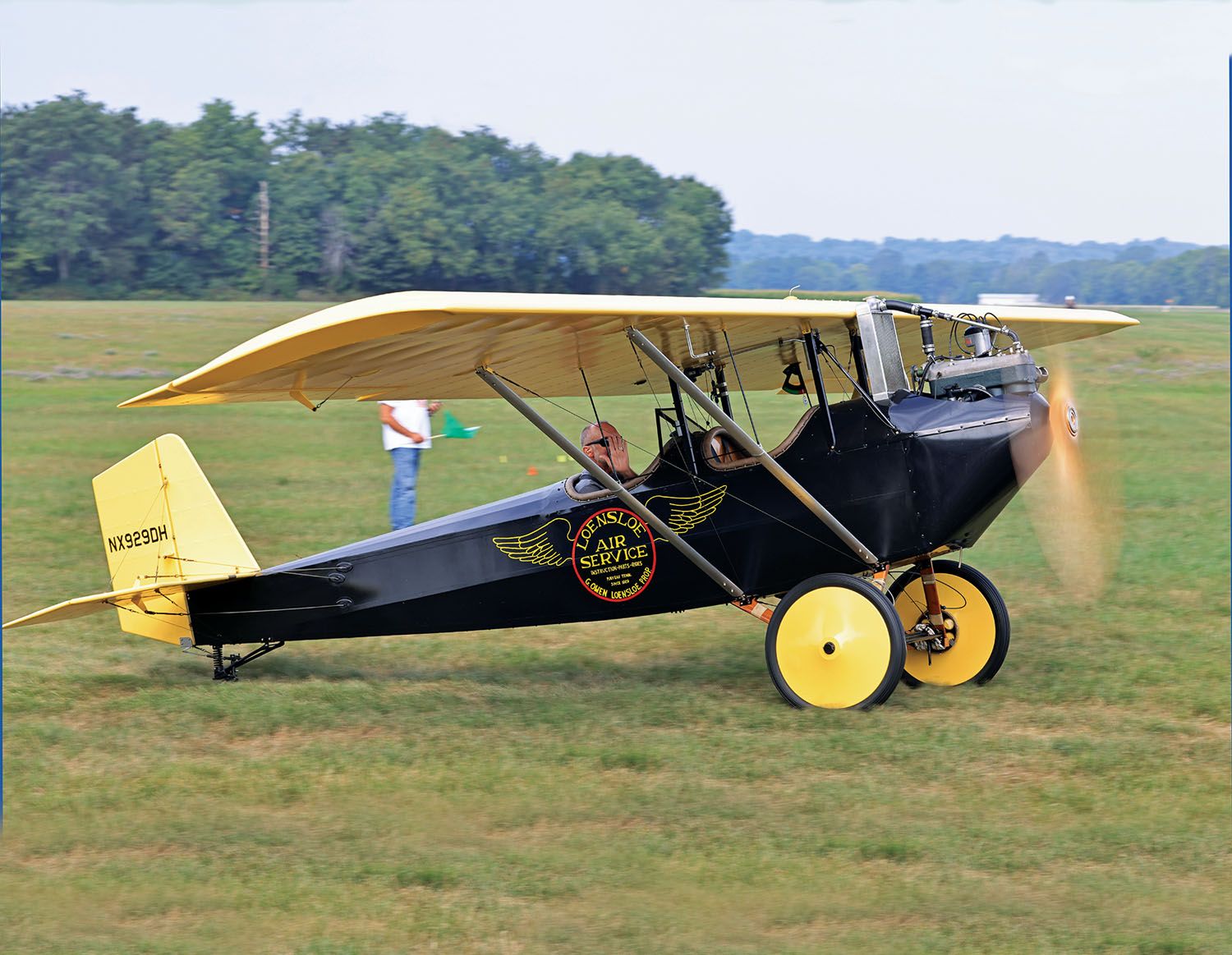
Shelley is a serial organizer, so after Kevin’s participation in the 2018 SARL event, she and Kevin decided that a similar event for Pietenpols would be a grand time, not to mention hilarious. After all, the idea of racing aircraft whose speed is measured in something like furlongs per leap year does tend to inspire a serious fit of the giggles.
The couple asked several prominent Pietenpol builders/flyers to form an informal board of directors. The first thing the board decided is that there would be no racing of Pietenpols. The event would be a performance evaluation, with completion times provided as a courtesy if the pilots wished to receive them. The event would use the general organization of a SARL event, but would absolutely, positively, definitely not be a race. In fact, after four years, if someone calls the event a race, everyone around him or her yells, “It’s not a race!” The original name for the event was Run for Fun, but that gave way to the more popular, Tour de Brodhead. Informally, it’s still “Not a Race!”
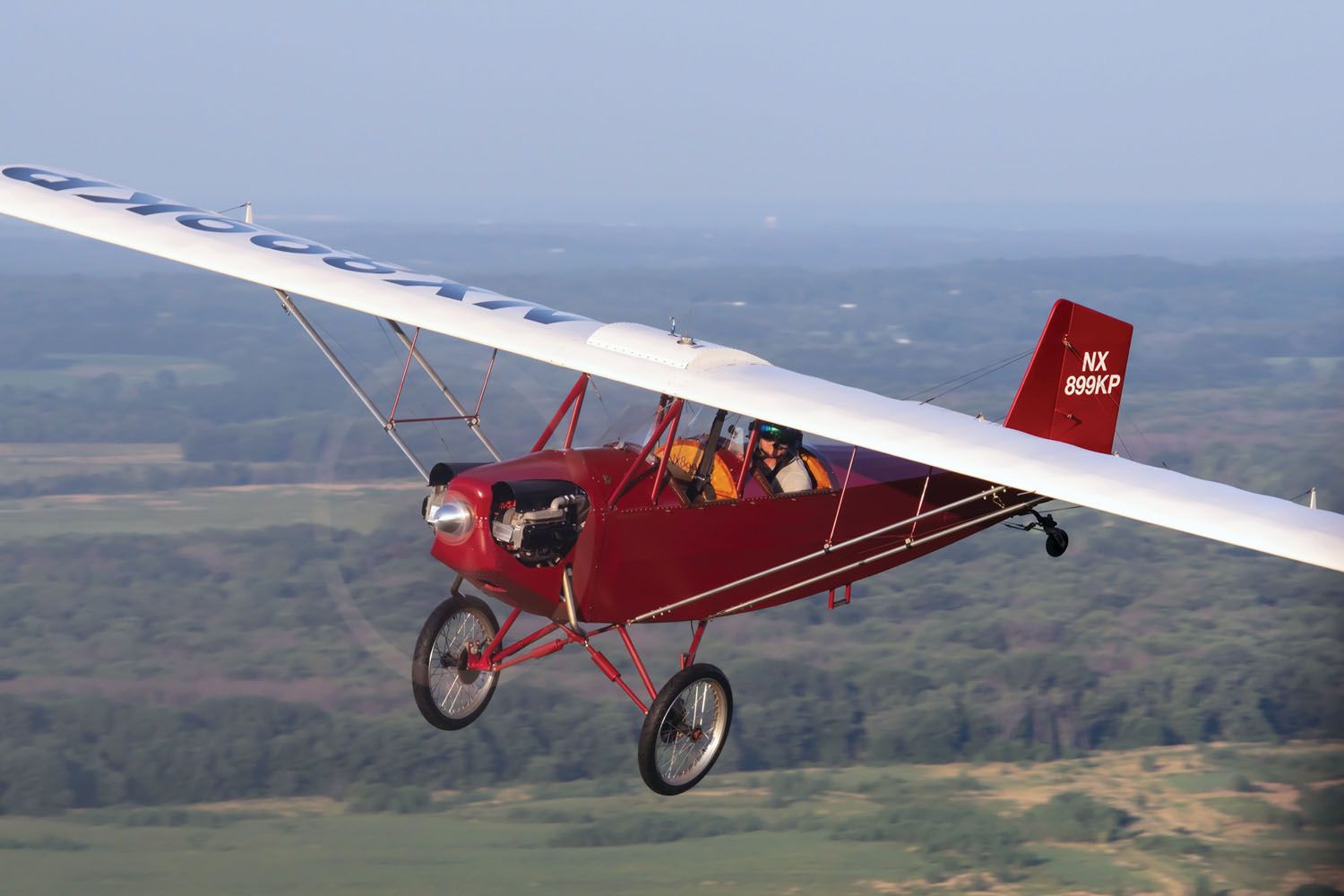
turns back toward Brodhead.
The Big Event
The Not-a-Race course starts from Brodhead and then goes to a number of local predetermined sites, creating a 30-mile circuit that ends back where it started. The aircraft are launched at roughly one-minute intervals with the speedier aircraft taking off first. Spotters at each turning point confirm the aircraft are following the course and don’t get off track. At Piet speeds, it takes about half an hour to get around the course (assuming there are no navigational errors or detours).
The night before, there is a mandatory briefing for all participants, and in the morning preparations begin early before engine start to allow plenty of time for all aspects of the event. Participants are grouped by engine type, with horsepower predicting anticipated airspeeds. The order of launch is typically Corvairs first, then large Continentals, followed by smaller Continentals, with Model As bringing up the tail end.
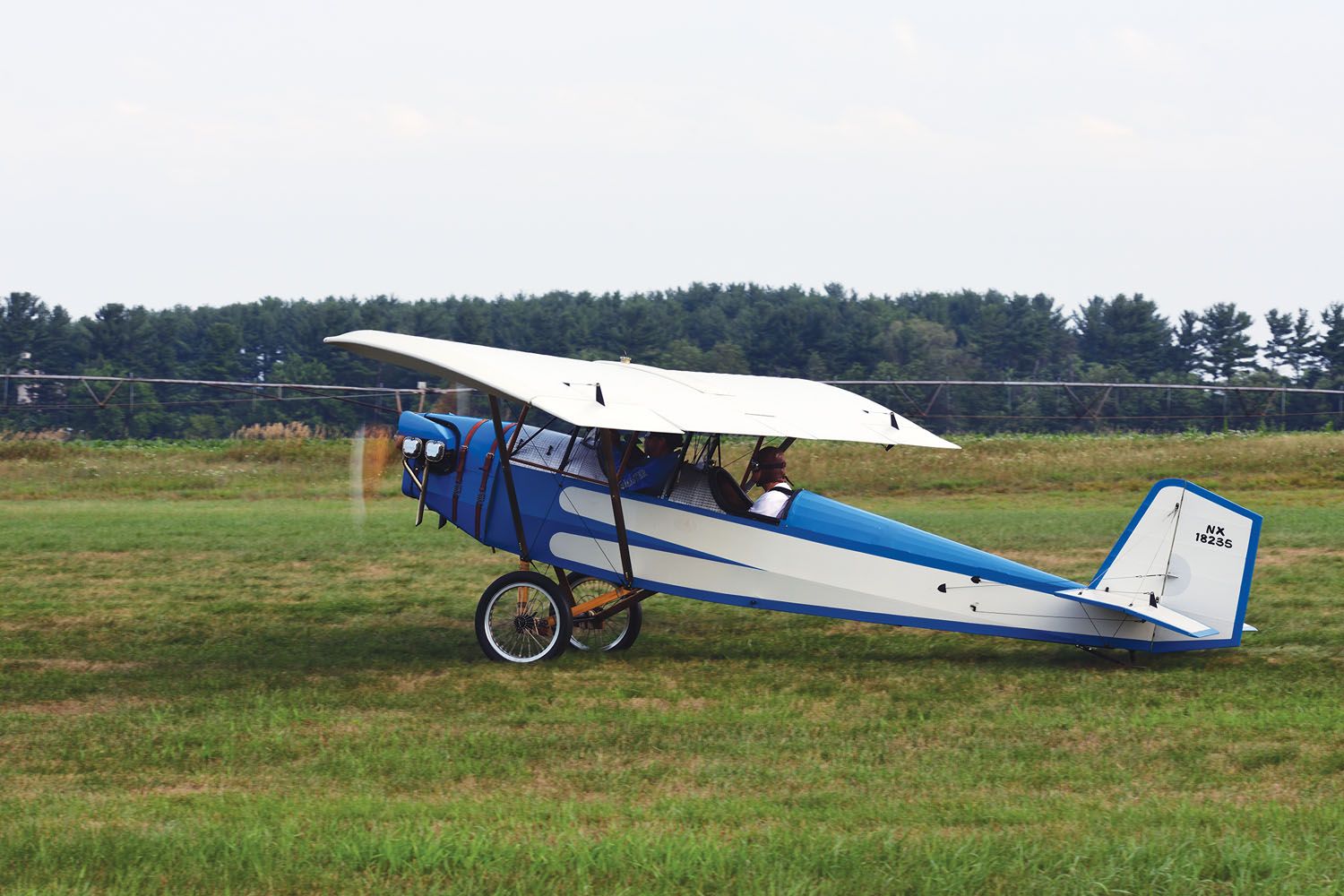
moves up to the starting line.
In 2018 the weather was terrible, so the board chose to postpone the event until 2019, given that these are strictly VFR aircraft. Due to the weather delay, 2019 became the inaugural year when nine Pietenpols participated. The board chose three categories to encompass the common engine types: Corvair, Continental and Model A.
Bob Lester turned in the fastest time overall with his Corvair-powered Pietenpol. Dennis Vetter had the fastest time among the Continentals, and Dan Helsper had the fastest time for the Model A contingent. There was no event in 2020 as apparently there was some bug going around. In 2021, 14 aircraft signed up with 13 launching, but only 10 completed the course.
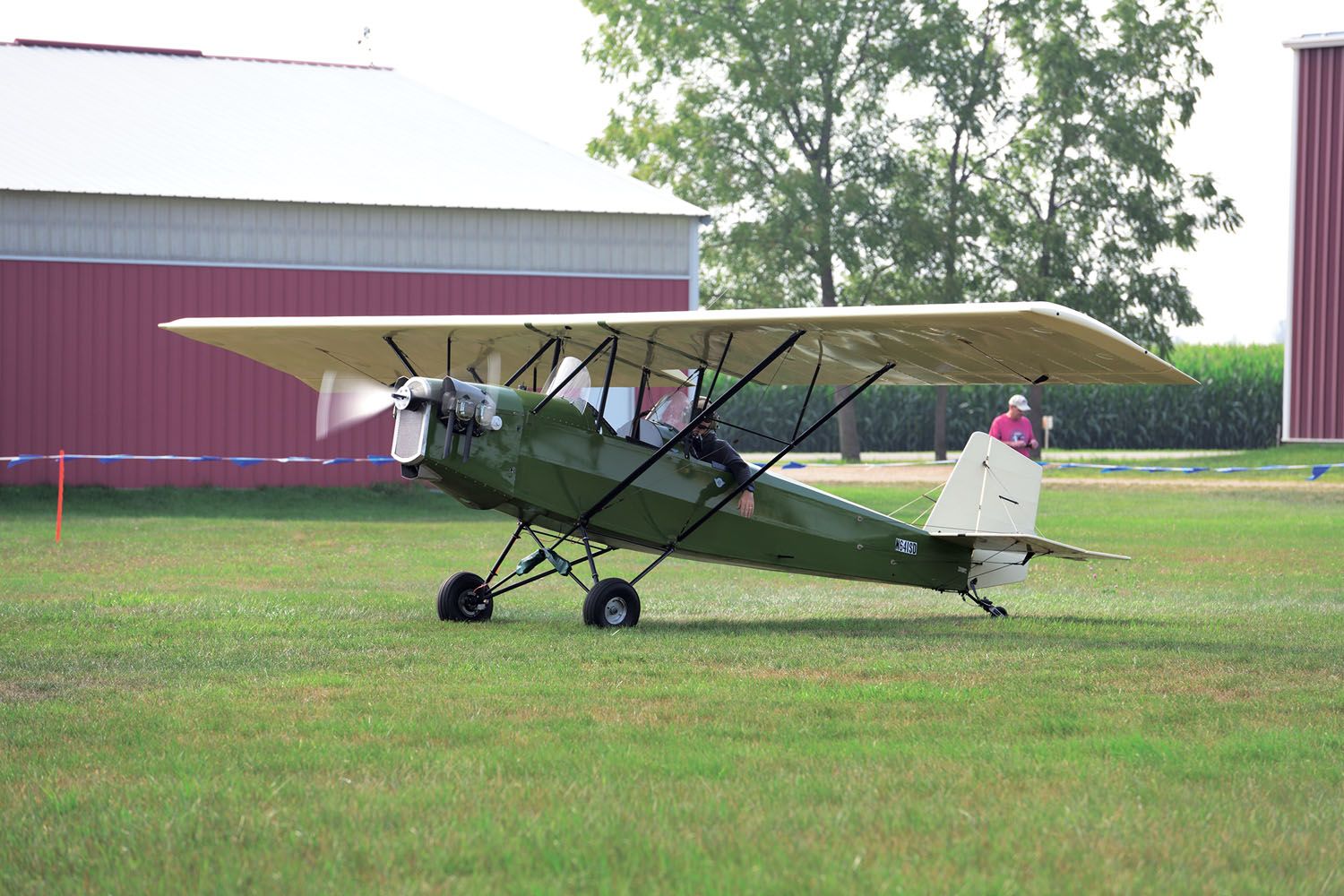
To break down the field by engines: There were three aircraft in the Corvair-powered contingent. This included Kevin Purtee’s Piet, Rosie. An appropriate shade of rose-red, it’s named after the song by the band AC/DC, “Whole Lotta Rosie.” Continuing the music theme, his first Piet was “Fat Bottomed Girl,” from the song by Queen. Along with Kevin was Shad Bell and Randy Bush flying behind their Corvair engines.
Next up was the small Continental-powered group, flying behind A-65s. This included Matt Paxton, Greg Cardinal, Jim Markle and Kenny Crider. The larger Continental engine group included an O-200 as well as two C-85s. This group included Bob Miller, Bob Poore and Ed Remsberg.
Last, but certainly not least, was the most original group of Air Campers, powered by Ford Model A engines. This included Dan Helsper, John Linke and Richard Roller.
Bob Miller turned in the shortest time around the course with his O-200 powered Grega at 22 minutes and 10 seconds. Shad Bell had the quickest Corvair (26 minutes and 45 seconds), Jim Markle was the fastest small Continental (27 minutes and 30 seconds) and Dan Helsper was the fastest Model A at 30 minutes and 45 seconds. Three aircraft took off with the Tour, but for various reasons (such as proceeding on to AirVenture) didn’t return to cross the finish line. There were no technical or mechanical issues.
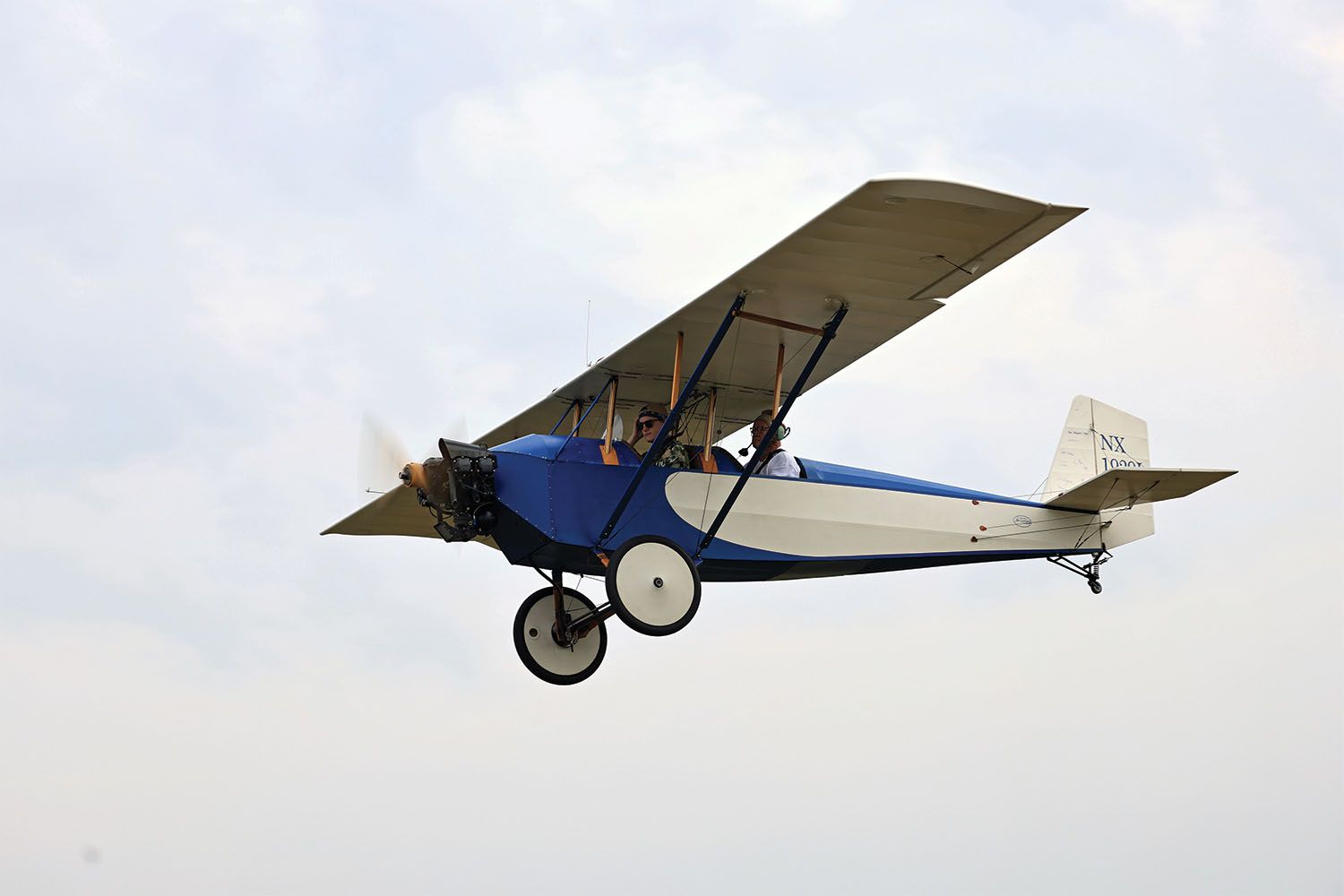
behind a Continental A-65 engine.
Horsepower vs. Drag
The Not-a-Race data is a great illustration of the aerodynamic principles where aircraft gain more speed with decreasing drag rather than increasing horsepower. While the axiom, “There’s no substitute for horsepower” might work in some settings, it doesn’t always (pardon the pun) fly well.
The natural thought is that a Model A powered Piet, with its low-horsepower engine, will change significantly by doubling the horsepower, but the numbers don’t support this. The 40-hp Model A powered Pietenpols averaged 59 mph, the fastest 65-hp A-65 went 68 mph, and the 100-hp aircraft turned in a best speed of 81 mph. Increasing the horsepower by 2.5 times only netted a 37% increase in speed, and some of that may be due to the lighter weight of the air-cooled engines and the decreased drag associated with removing the radiator.
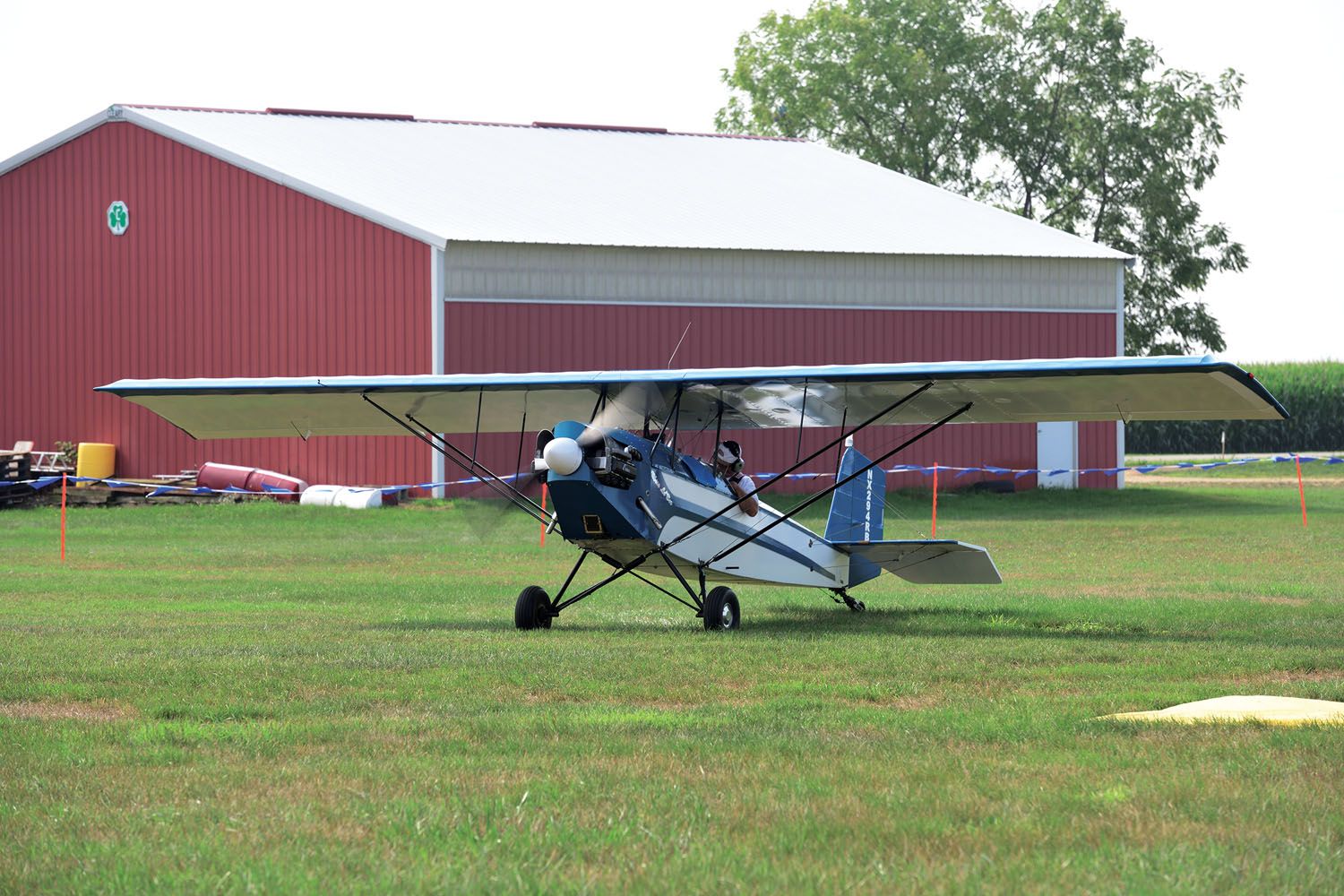
A side note: It would be interesting to consider the weights of the participating aircraft. A broad spectrum of Pietenpol weight data is available in the Pietenpol Weight and Balance Manual. Compiled by William Wynne and several other contributors, it is available from the Brodhead Pietenpol Association.
Silly, but Fun!
It’s hard to describe how charming and amusing it is to see a line of 1929-era wood-and-fabric aircraft S-turning on the grass in the Wisconsin morning. If ever there was a sight that captures the essence of flight, this is it. No high-speed composite lightning bolts grumbling with oodles of horsepower. Rather, leather flight helmets, fabric humming in the slipstream and the slow “pooka-pooka-pooka” of 90-year-old engines. The recorder (Shelley Tumino) noted each pilot’s starting time as they were cleared onto the runway. Waved onward by the starter’s ad-libbed minuscule flag, airplane after airplane slowly took the runway, gathered speed and started on the course. Most of the audience had finished their second cup of coffee before everyone had launched and was out of sight.

The course took the participants out from the airport, brought them around the countryside over the town of Brodhead, past its picturesque water tower and back to the airport. It’s hard not to imagine that things aren’t all that different than they were in Bernard’s time. The fields don’t look so changed now as they did then, and the sheer joy of flight hasn’t changed either. These wood and fabric low-tech aircraft remain a financially viable option for those who want to fly for no other reason than to experience the pure joy of flight. A joy of tinkering with mechanical things is also a must.
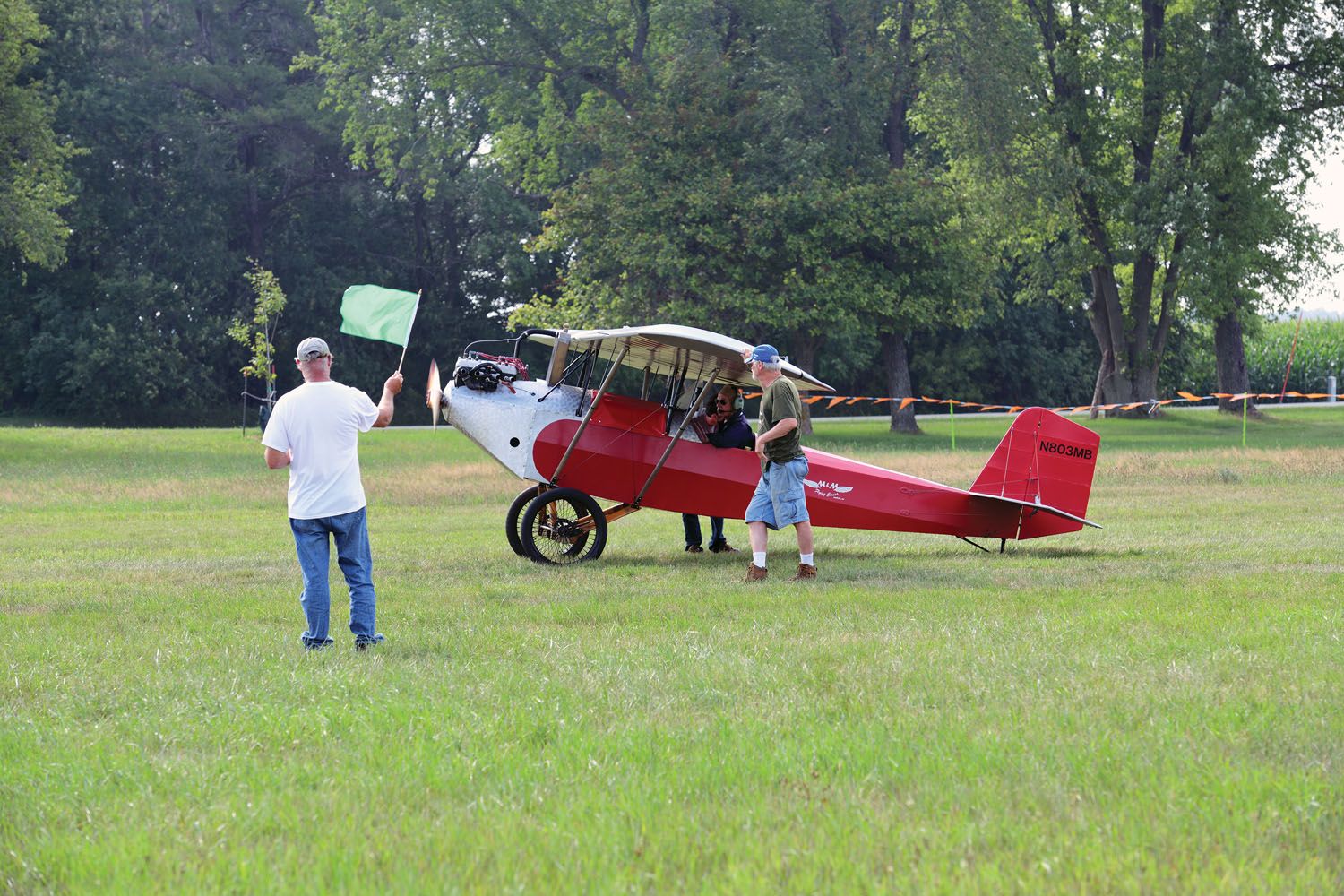
A timed event for aircraft that fly really slow is kind of silly, but the pilots and folks on the ground really have an enjoyable time. The sight of 13 Pietenpols waddling out and lining up to take off is something to behold. It’s a neat event that draws in a lot of pilots and volunteers and offers a focused activity for one small part of a very informal weekend. The board asks for a small donation from participating pilots, and the proceeds go to local EAA Chapter 431 and the Kelch Aviation Museum. We look forward to touring and not racing again in July 2022.
